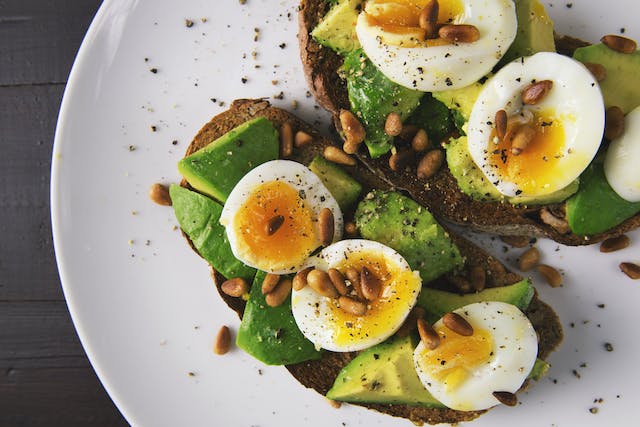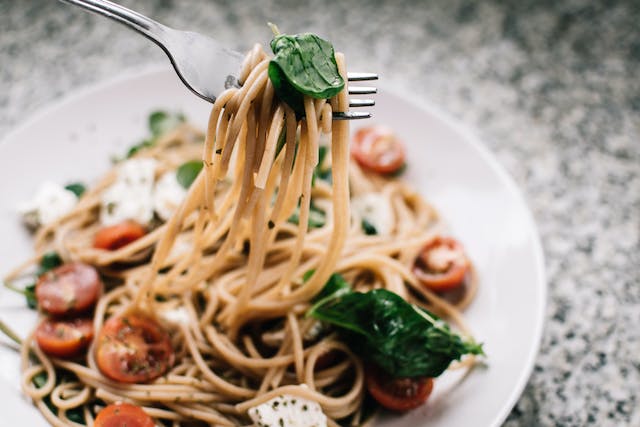8 Uniquely Italian Eating Habits
Everyone knows Italian cuisine for its ancestral recipes and fresh, flavourful ingredients. While Italian food has spread worldwide, there are a few distinctive Italian eating habits that are not quite the same in other places.
Julia, a special collaborator who has been living in Italy for over 5 years, will share with us 8 Italian eating customs that you should know before visiting the country.
→Sign Up Now: Free Trial Italian Lesson With a Native Teacher!←
1. The Power of Coffee
For Italian people, starting the day without one (or even several) super-strong and creamy espressos in the morning is almost a bad omen. They drink it at home, at work, with friends, or quickly (in one gulp) standing at the counter of a café, giving a “buongiorno” to the friendly bartender. At breakfast, coffee is accompanied by a cornetto or pastry of choice, which can have various fillings such as cream, ricotta, pistachio, jam, fruits, etc. As for the coffee itself, some Italians prefer the typical cappuccino (which is only had in the morning), but a lot of people have regular coffee with a little milk and lots of foam.
2. There’s Always Time for Aperitivo
More than a time to have a prosecco, spritz, or non-alcoholic drink, the famous Italian aperitivo is one of the most uniquely Italian eating habits but also a social event. When the sun goes down, around 6-7 pm, and people start to come out of work or school, they gather with friends or partners and nibble on some finger foods like bruschettas, olives, or salted almonds, all accompanied by a few drinks, conversation, and Italian games. While at the beginning it may seem like a challenge to have all this food a few hours before actual dinner, Julia says that, above all, it’s a perfect excuse to socialize and enjoy some delicious snacks while waiting for the unusually late Italian dinnertime.

3. The Daily Pasta
While rice replaces pasta as the most popular dish in some Italian regions, it’s still part of Italian eating habits to eat pasta at least three times a week. Pasta is cooked with a stopwatch to achieve the perfect “al dente” texture (not overcooked). The best recipes are the simplest ones, like pasta aglio e olio (garlic and oil) or a marinara sauce. Pasta is also served with vegetables, meat, seafood, mushrooms, cheese, and countless more ingredients depending on the region or personal preferences. Whether it’s spaghetti, penne, fettuccine, or any other type of pasta, Italian pasta is accompanied by the sauce of choice, but not with bread. Oh, and if the sauce includes fish, don’t even think about putting grated cheese on top.
4. Pizza Only at Night
Italian pizza is an art and one of the most defining aspects of Italian eating habits. From the way the dough is made and how it’s stretched by hand to add toppings and bake in a wood-fired oven, pizza-making is not something to be taken lightly. However, there’s something about Italian pizza you should know.
While touristy restaurants might serve pizza at any time, it’s very rare for a true Italian to eat pizza at lunch. In fact, traditional restaurants typically serve it only at dinner. According to Julia, the pizza chef (“pizzaiolo” in Italian) makes pizzas on the spot (nothing is kept in the fridge for the next day!) and only turns on the oven in the evening. This ensures that every ingredient used in the elaboration of Italian pizza is super fresh.
Additionally, while sharing is a big part of Italian culture in general and Italian eating habits in particular, a true Italian eats a whole pizza—yes, one pizza per person. No sharing!
5. The Correct Order of Things
Eating habits in Italy are not only about what you eat but how you eat. When it comes to ordering food, there are certain rules you should follow if you want to blend in with the locals.
While some steps can be skipped, Italian eating habits dictate that courses should be served in this order:
- Antipasto (appetizer) – Usually a cold dish, such as cured meats and cheese.
- Primo (first course) – Pasta, risotto, or soup
- Secondo (second course) – Meat or fish-based main dishes
- Contorno (side dish) – Vegetables or salads to accompany the second course.
- Dolce (dessert) – A sweet treat to end the meal, for example, tiramisu or panna cotta.
- Caffè (coffee) – Typically an espresso to help digest the big Italian meal.
- Digestivo (digestive) – A shot of liquor such as amaro or limoncello to aid in digestion.
6. No Eggs for Breakfast
When it comes to Italian eating customs, eggs are not a typical breakfast item. Unlike some breakfast traditions in other cultures that include eggs as a staple, Italians prefer to reserve eggs for other meals of the day. Breakfast in Italy is more likely to consist of a strong espresso, a cappuccino, and a pastry or bread with jam or a sweet spread. Eggs are commonly enjoyed during lunch or dinner, prepared in various ways such as in pasta dishes, frittatas, or as part of a meat-based course.
7. Don’t Cut Spaghetti
Italians are passionate about their pasta, and there’s a cardinal rule when it comes to eating spaghetti: never cut it with a knife! It’s customary to twirl the long strands of spaghetti around a fork to create a bite-sized portion. Cutting spaghetti with a knife is considered a faux pas and may raise eyebrows among traditionalists. The art of twirling spaghetti is not just a practical matter; it’s a cultural norm that emphasises the enjoyment of the meal and the appreciation for the texture and flavour of the pasta. So, if you want to embrace Italian eating customs, embrace the twirl and leave the knife behind!

8. Celebrate Easter the Italian Way
If you happen to be in Italy during Easter and receive an invitation to a family gathering, don’t forget to bring a “Colomba Pasquale” (Easter dove). Resembling Christmas panettone but shaped like a dove and delicately glazed, this sweet leavened bread holds symbolic significance, representing peace and love—a thoughtful offering for the religious festivities. Alongside the Colomba Pasquale, another cherished tradition involves the exchange of elaborately decorated chocolate eggs, often containing surprises. Julia says: “These eggs serve as delightful tokens of joy and affection, enhancing the festive spirit of Italian Easter celebrations with sweet gestures and shared traditions.”
Learn Italian with Language Trainers
As you explore the rich tapestry of Italian eating habits, from the delightful flavours of breakfast to pasta etiquette, you might find yourself eager to dive even deeper into the heart of Italian culture. And, what better way to enhance your understanding and appreciation than through a tailor-made course with one of our native Italian teachers?
→Sign Up Now: Free Trial Italian Lesson With a Native Teacher!←
At Language Trainers, we offer Italian courses that provide a journey into the cultural nuances that make Italy unique. Whether you’re yearning to perfect your pronunciation or just need to learn a few phrases to get by in Rome, our native teachers are ready to guide you. Thanks to our hundreds of native teachers located all over the world, we can teach you how to speak Italian lessons in Liverpool, London, and every other city across the UK.
So, why wait? Take an Italian course now and join us on a linguistic and cultural adventure that goes beyond textbooks—because there’s no better way to embrace Italy than with the guidance of those who call it home.
